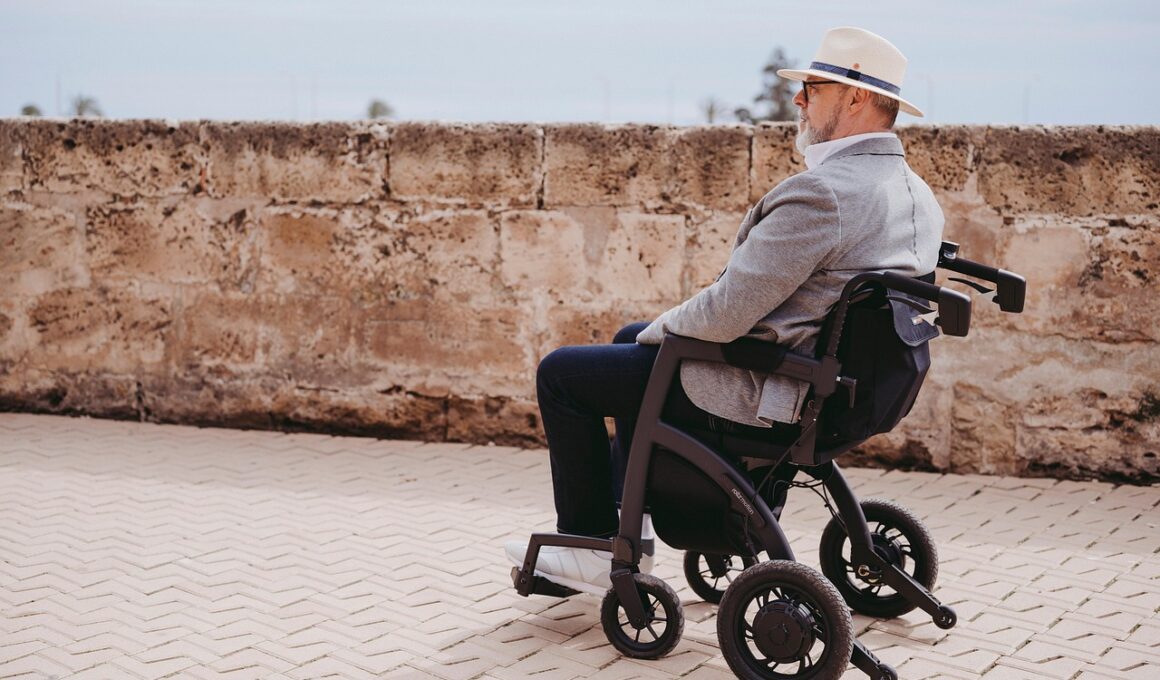Body Composition Changes and Their Effects on Mobility in the Elderly
As individuals age, their body composition undergoes significant changes that can profoundly affect their mobility. Primarily, the loss of lean muscle mass, known as sarcopenia, becomes pronounced. This decline in muscle mass affects not just strength but also balance, making falls more likely. Additionally, the proportion of body fat tends to increase, impacting overall health and increasing the risk of chronic conditions. Fat distribution alters, with visceral fat accumulating, which is linked to various health complications. Consequently, the decreased ability to perform daily tasks is often noted in older adults. Research indicates that maintaining a healthy body composition can mitigate some of these mobility issues.
In addition to muscle loss, another critical aspect of body composition in the elderly involves bone density. Osteoporosis, characterized by fragile bones, can lead to an increase in fractures and falls. This condition is exacerbated by the reduction in calcium absorption and hormonal changes that occur with aging. Furthermore, various nutritional deficiencies can affect both muscle and bone health. Addressing these deficiencies through dietary improvements as well as possibly supplementation, can play a significant role in enhancing overall mobility. It is vital that older adults engage in activities that encourage bone and muscle strength.
The Role of Nutrition
Nutrition is a cornerstone in maintaining optimal body composition. A balance of macronutrients—proteins, carbohydrates, and fats—is essential for supporting muscle synthesis and overall health. Older adults often have unique nutritional needs, so ensuring adequate protein intake becomes crucial. This may include sources such as fish, poultry, nuts, and legumes. Moreover, staying hydrated is essential as dehydration can lead to fatigue and decreased physical performance. Meals that are rich in fiber can promote gut health and contribute to metabolic functions as well. Consulting with a nutritionist may provide tailored advice to enhance dietary choices for mobility.
Importance of Exercise
Regular physical activity is vital for maintaining muscle mass and bone density in aging populations. Resistance training, in particular, has been shown to counteract the effects of sarcopenia effectively. Activities like weight lifting or body-weight exercises can stimulate muscle growth and improve strength. Aerobic exercises, such as walking or swimming, also promote cardiovascular health, which is critical for overall vitality. Older adults should be encouraged to participate in varied physical activities each week. Tailored exercise programs can be designed to meet individual capabilities and interests, thereby enhancing adherence and enjoyment.
Alongside structured exercises, activities of daily living should not be overlooked. Simple tasks, like gardening or walking, ensure that older adults remain active in their routine. These activities contribute to maintaining functional fitness, balance, and coordination, all of which are essential for preventing falls. Learning to incorporate movement throughout the day empowers elders to take an active role in their health. By focusing on functional mobility and strength conditioning, older adults are less likely to experience declines in independence.
Social and Psychological Factors
Social influences play a critical role in physical activity levels among older adults. Engaging in group activities not only fosters motivation but also combats loneliness, which can significantly impact both mental and physical health. Additionally, psychological factors such as fear of falling can deter participation in physical activities, leading to a cycle of decreased mobility and further loss of strength. Providing encouragement and ensuring safe environments can promote greater involvement in both social and physical activities, ultimately enhancing mobility and quality of life.
Moreover, mental health is intricately connected to physical activity and mobility. Older adults who feel a sense of purpose or connection are more likely to stay active. Programs that incorporate physical fitness with cognitive activities can have lasting positive effects on both mind and body. Interventions that engage the elderly emotionally can reduce feelings of depression and increase motivation to participate in helpful activities. Family support and community resources can aid in fostering these interconnected domains crucial for promoting elder mobility.
Ultimately, understanding the relationship between body composition changes and mobility in the elderly is essential for healthcare providers. By recognizing the multifaceted aspects—ranging from nutrition to social influences—interventions can be more effective. As the elderly population continues to grow, prioritizing education about maintaining healthy body composition becomes increasingly important. Continuing research is fundamental to developing innovative strategies. Collaborative efforts among healthcare professionals can lead to improved mobility, enabling older adults to retain independence and improve their quality of life.


